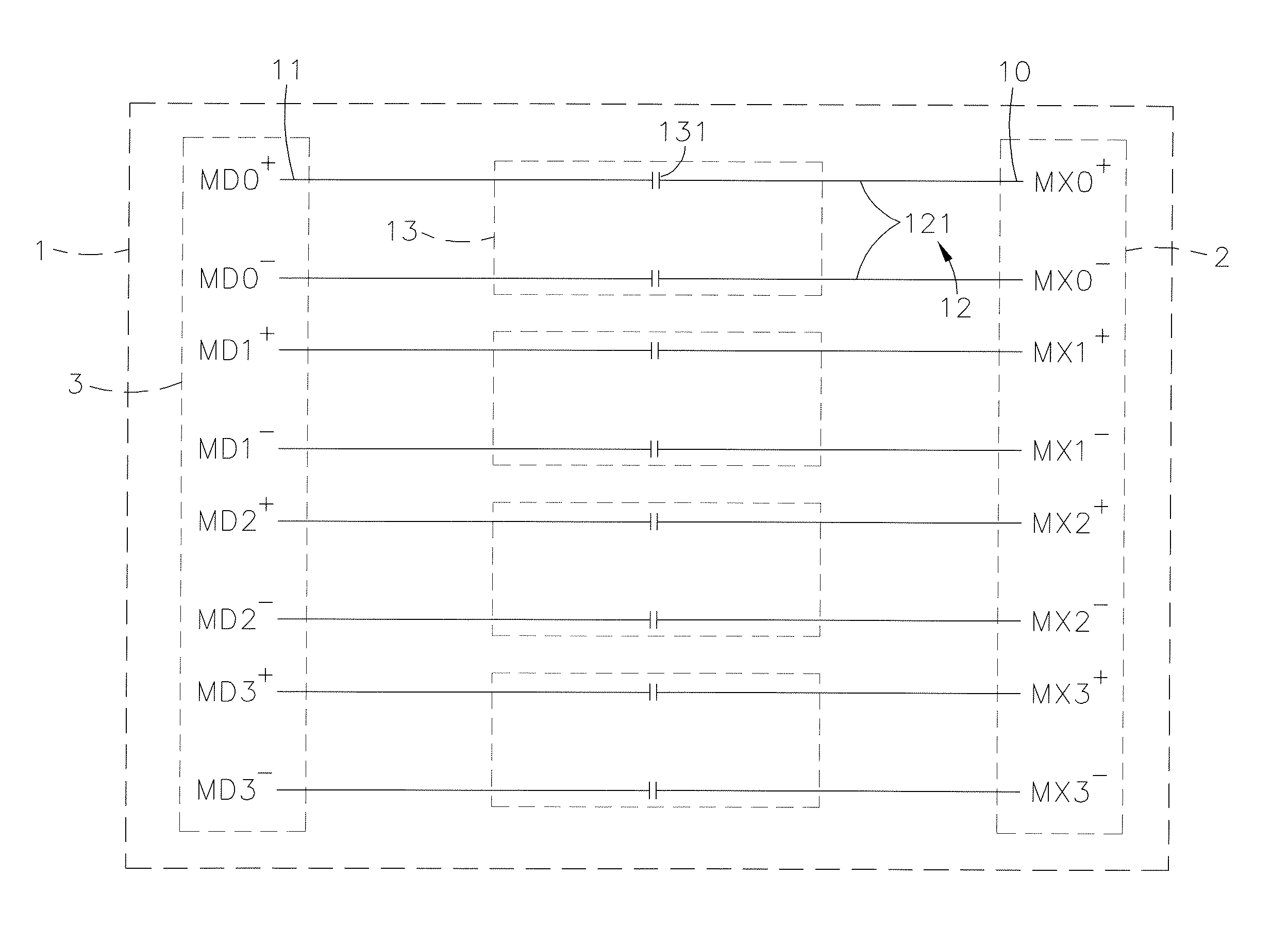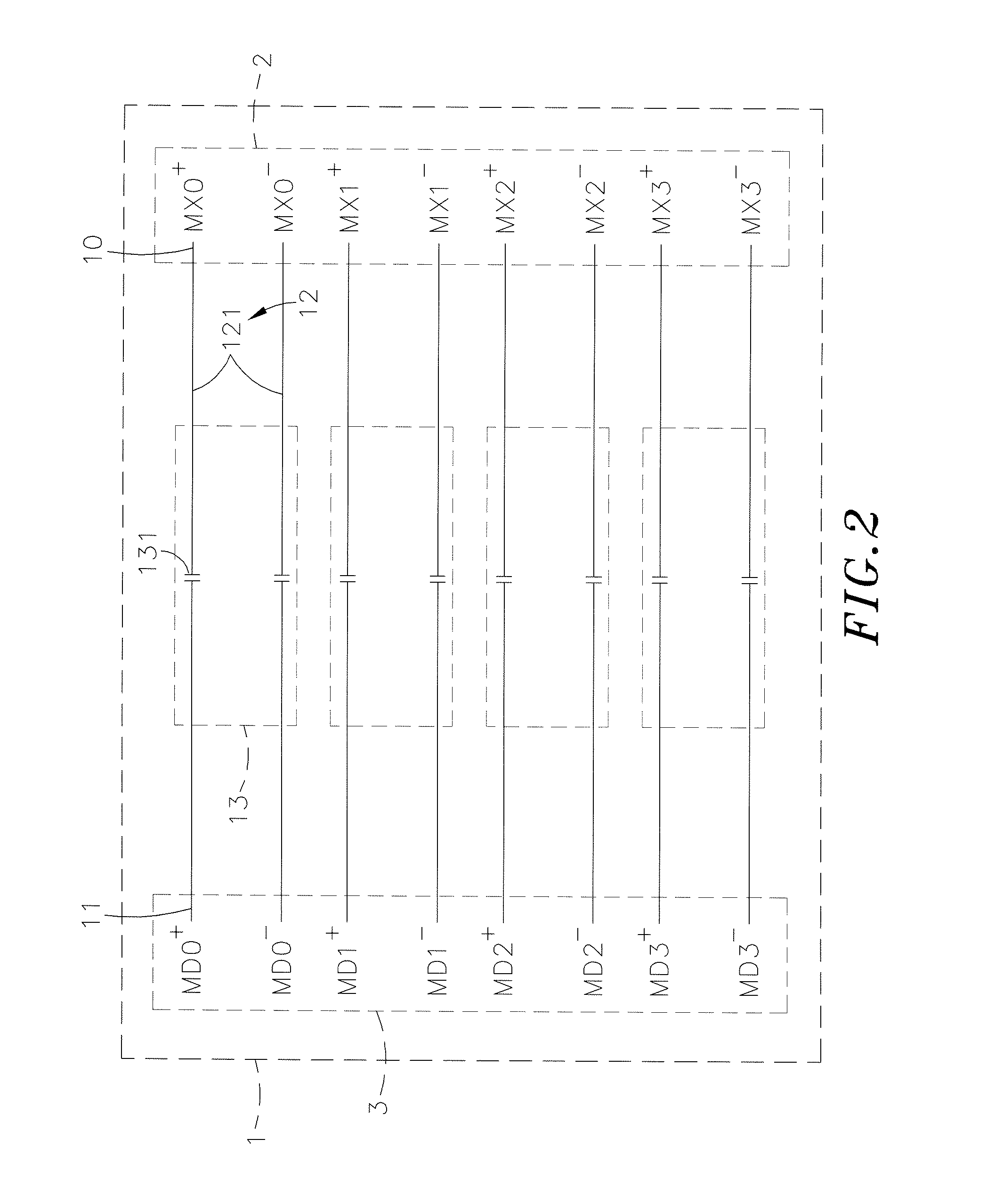Network signal coupling circuit assembly
a network signal and coupling circuit technology, applied in the field of network technology, can solve the problems of low fabrication efficiency of this kind of network connector, inseparable relationship between people and networks, and ineffective removal of noise from network signals, so as to achieve the effect of eliminating noise from network signals
- Summary
- Abstract
- Description
- Claims
- Application Information
AI Technical Summary
Benefits of technology
Problems solved by technology
Method used
Image
Examples
Embodiment Construction
[0020]Referring to FIGS. 1 and 2, a simple circuit block diagram and a simple circuit diagram of a network signal coupling circuit assembly in accordance with the present invention are shown. As illustrated, the network signal coupling circuit assembly comprises a signal coupling circuit 1 installed in a circuit board 4 and having a first connection end 10 thereof electrically connected to a network connector 2 and an opposing second connection end 11 thereof electrically connected to a network-on-chip 3. The network-on-chip 3 is a current-mode design, and therefore, the network-on-chip 3 outputs electric current to the signal coupling circuit 1. The signal coupling circuit 1 comprises a plurality of two-wire channels 12 electrically connected in parallel between the first connection end 10 and the second connection end 11, and a plurality of coupling modules 13 respectively installed in the two-wire channels 12 and respectively electrically coupled between the first connection end ...
PUM
 Login to View More
Login to View More Abstract
Description
Claims
Application Information
 Login to View More
Login to View More - R&D
- Intellectual Property
- Life Sciences
- Materials
- Tech Scout
- Unparalleled Data Quality
- Higher Quality Content
- 60% Fewer Hallucinations
Browse by: Latest US Patents, China's latest patents, Technical Efficacy Thesaurus, Application Domain, Technology Topic, Popular Technical Reports.
© 2025 PatSnap. All rights reserved.Legal|Privacy policy|Modern Slavery Act Transparency Statement|Sitemap|About US| Contact US: help@patsnap.com



